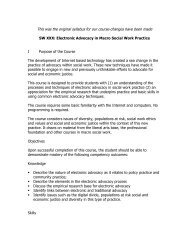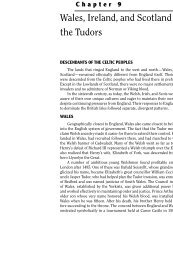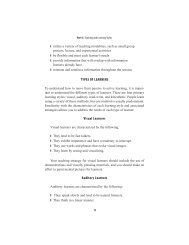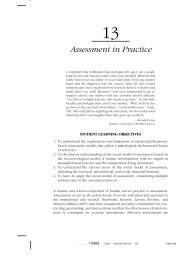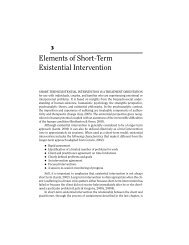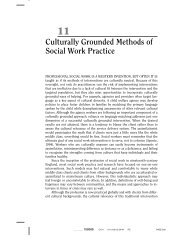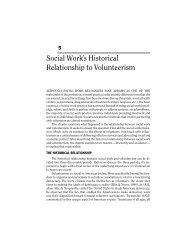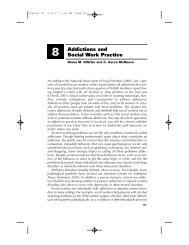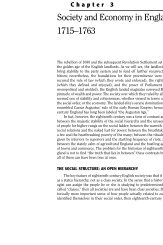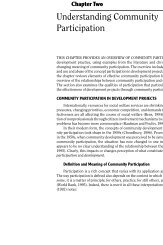Chapter 6 Medieval British Society, 1066–1485 - Lyceum Books
Chapter 6 Medieval British Society, 1066–1485 - Lyceum Books
Chapter 6 Medieval British Society, 1066–1485 - Lyceum Books
You also want an ePaper? Increase the reach of your titles
YUMPU automatically turns print PDFs into web optimized ePapers that Google loves.
120 Part II Norman Britain<br />
children was being eaten by wild pigs that ran the streets and would attack a child<br />
left in the cradle. This gruesome statistic tells us that women’s duties sometimes<br />
took them away from home to perform tasks where a baby would be an encumbrance<br />
or that were of a nature that the woman believed the child to be safer left at home.<br />
Aristocratic women had challenging responsibilities in managing large households<br />
of servants and retainers as well as large families of their own, and their presence<br />
graced the banquets, dances, and other social events held at the court or in<br />
the castles of the nobility. Occasionally widows took over the management of their<br />
husbands’ estates or businesses, and some of them seem to have had considerable<br />
freedom to exercise their talents in these areas.<br />
Brief examination of the lives of three exceptional medieval women will dispel<br />
any notion that their lives were inevitably dull or unimportant. We may consider<br />
the careers of England’s greatest medieval queen, Eleanor of Aquitaine; one of the<br />
most fascinating religious mystics, Margery Kempe; and an exceptionally articulate<br />
and able gentlewoman, Margaret Paston.<br />
Eleanor of Aquitaine was born in southern France, the daughter of a duke of<br />
Aquitaine, whose properties she inherited. By her father’s arrangement she was<br />
married to the king of France, Louis VII, and she went with him on a Crusade.<br />
Their marriage was annulled in 1152, probably because it had not produced a male<br />
heir but in theory because of a distant kinship between husband and wife. Eleanor<br />
almost immediately married Henry II of England, thus bringing Aquitaine into his<br />
far- fl ung empire. A headstrong woman, she never got on well with Henry. For a<br />
time she was kept under arrest in one or another of Henry’s English castles. Finally<br />
allowed to establish her own residence at Poitiers, in southern France, she created<br />
one of Europe’s most sophisticated courts, with elegant private chambers, tournaments<br />
fought by armed knights, visits by aristocrats making pilgrimages, and music<br />
and poetry composed by troubadours—indeed, all the trappings of chivalry and<br />
courtly love. Eleanor was deeply involved in the political machinations of her four<br />
sons against their father. After the death of Henry II she was virtually the ruler of<br />
England while Richard the Lionheart was gone on his Crusade. Dying in 1204, she<br />
was buried alongside kings of France at Fontevrault Abbey in Normandy.<br />
Margery Kempe was the daughter of a rich merchant, the mayor of Lynn in<br />
East Anglia. Intimate details of her life are known because she dictated her autobiography,<br />
The Book of Margery Kempe. Strangely enough, the book did not come<br />
to light until the 1930s. In it she relates her marriage to a husband of lower status,<br />
her immediate pregnancy, and the sicknesses and diffi cult labors that attended the<br />
birth of all of her fourteen children. Finally, religious meditation led her to reject<br />
her husband’s sexual advances. An extraordinary scene in the autobiography describes<br />
how she and her husband—over cakes and a beer—agreed that she might<br />
take a vow of celibacy, although they would share the same bed and eat together on<br />
Fridays. Despite this agreement they lived apart until his old age, when she took<br />
him in and nursed him. Claiming to be visited by visions of Christ, Margery came to<br />
believe that she had a special vocation to weep for sinners and pray for the salvation<br />
of their souls. She died about 1440.



